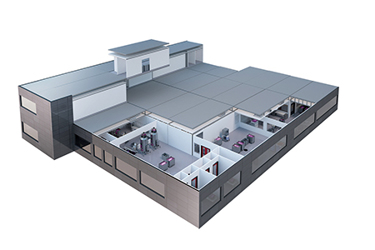Three Options To Viral Vector Manufacturing Capacity
By Carol Houts, Vice President Quality and Business Strategy, Germfree; Peter Walters, Advanced Therapy Medicinal Product Subject Matter Expert, CRB; Ryan McDonough, PE, Senior Vice President of Project Operations, DPS; Steve Gravallese, Program Director, Cytiva; Joseph Makowiecki, Director of Business Development, Cytivia

Frost & Sullivan recently invited industry thought leaders working in the viral vector manufacturing space to participate in our Virtual Think Tank (VTT), a unique thought leadership platform that brings together leading minds, to discuss viral vector manufacturing facility design. The focus of the most recent VTT was on the current challenges and trends influencing design considerations for viral vector manufacturing facilities and how they can impact companies developing cell and gene therapies.
According to the National Institutes of Health, “Gene Therapy is an experimental technique that uses genes to treat or prevent disease.” Gene therapy is a novel therapeutic area that may involve the insertion of a new gene or knock down an existing gene. Gene therapy can be of two types: in-vivo (gene transfer into cells happens inside a patient’s body) and ex-vivo (gene modification of cells happens outside a patient’s body and they are then transplanted into the patient). With over 2,200 clinical trials since 1989 and the advent of novel gene-editing tools and viral delivery vectors, gene therapy may hold the key to a possible cure by targeting the underlying causes of genetic diseases and rectifying them.
In recent years, we have witnessed a sharp increase in the number of gene therapies in pre-clinical and clinical studies, suggesting an exciting trend pointing to the possible emergence of treatments for medical conditions such as Hemophilia B, Spinal Muscular Atrophy, Muscular Dystrophy, thalassemia, etc. Even with the recent impact of the COVID-19 pandemic, viral vector-based COVID-19 vaccines are being actively pursued by a number of biopharmaceutical companies and academic institutions. So, the demand for viral vector manufacturing facilities that can cater to the needs of pre-clinical, clinical and commercial development of gene therapies is only expected to increase exponentially year on year over the next decade.
Get unlimited access to:
Enter your credentials below to log in. Not yet a member of Pharmaceutical Online? Subscribe today.
